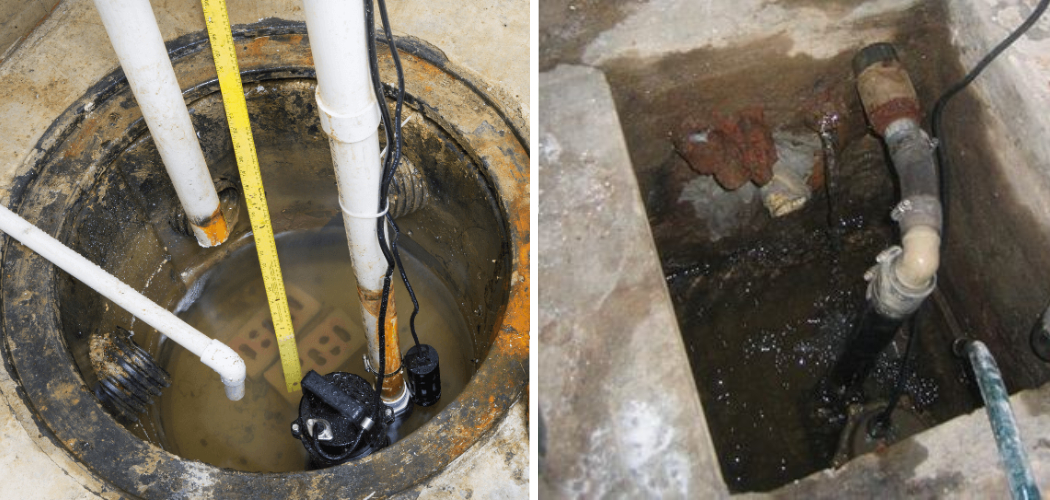Do you have a smelly sump pump? If so, don’t worry; there are ways to get rid of the bad smell. If your sump pump is smelly then there’s a good chance that you’re familiar with the bad smell that it sometimes emits. While the smell can be unpleasant, it’s not usually anything to worry about. In some cases, however, the smell can be a sign of something wrong with your pump.
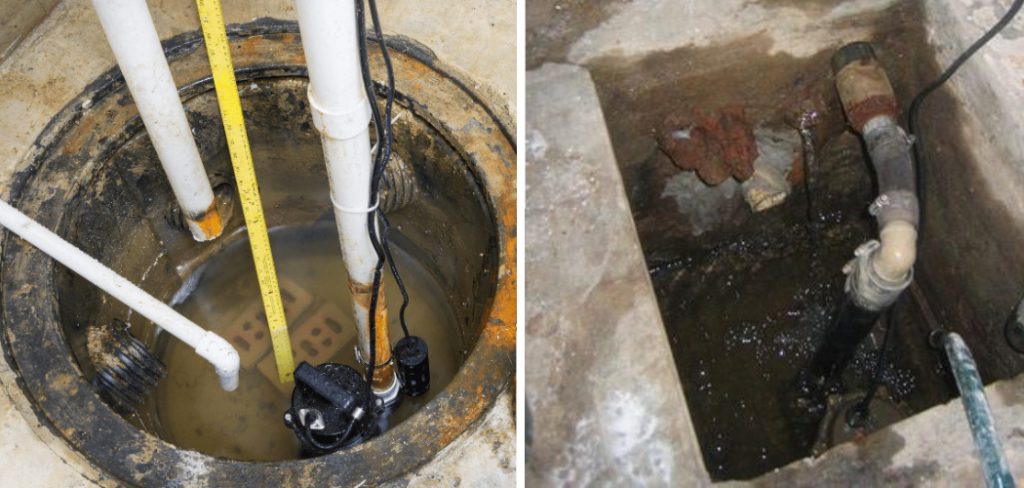
If you’re experiencing a bad smell from your sump pump, In this blog post, we will discuss how to get rid of bad smell from sump pump. We will also provide some tips on how to keep your sump pump smelling fresh. So, if you are dealing with a smelly sump pump, read on for tips on how to fix the problem.
Can I Put a Chlorine Tablet in My Sump Pump?
Yes, you can put a chlorine tablet in your sump pump. Chlorine tablets are an effective way to disinfect the water in your sump pump, which can help to reduce odors and keep your sump pump smelling fresh. When using chlorine tablets, make sure to follow the manufacturer’s instructions; if you don’t, you could cause damage to your pump. If you’re unsure how to use chlorine tablets, consult a professional.
9 Methods How to Get Rid of Bad Smell from Sump Pump
1. Clean the Sump Pit Regularly:
To keep your sump pump smelling fresh, make sure to clean the sump pit regularly. Use a broom or vacuum cleaner to remove any debris that has built up in the pit. You can also add some bleach to the water in the sump pump to help kill any bacteria or mold that may be growing in it. If the smell does not go away after regular cleaning, you may need to replace the sump pump altogether. However, this should be a last resort.
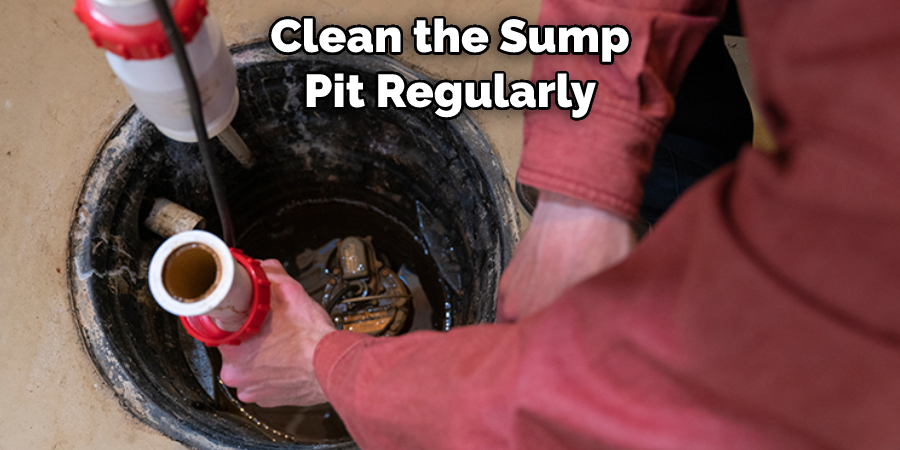
2. Check for Leaks:
It is important that you regularly check for leaks around your sump pump. Look for any cracks or holes in the pipe where water could be leaking out, and make sure all of the seals are tight and secure. If there are any signs of leakage, have a plumber come and repair it right away before it becomes a larger problem. While you’re at it, make sure all the other pipes in your home are properly sealed as well. Try to avoid any shortcuts when it comes to the integrity of your plumbing system.
3. Change Out The Filter:
You should change out your sump pump filter every few months or as recommended by the manufacturer’s instructions. A clogged filter will cause your sump pump to work harder and could eventually lead to a breakdown. If you’re not sure how to change out the filter, consult your owner’s manual for instructions.
However, most filters are easy to remove and replace. Simply unscrew the filter from its housing, replace it with a new unit, and screw it back into the housing. Make sure to check for any clogs or debris before you put the new filter in place.
4. Test The Sump Pump:
Testing your sump pump regularly is an important part of making sure it works properly when you need it most. Run the pump for a few minutes to make sure it is running correctly and pumping water out of the pit as it should be. If you notice any strange noises or vibrations coming from the pump, have a professional check it out right away.
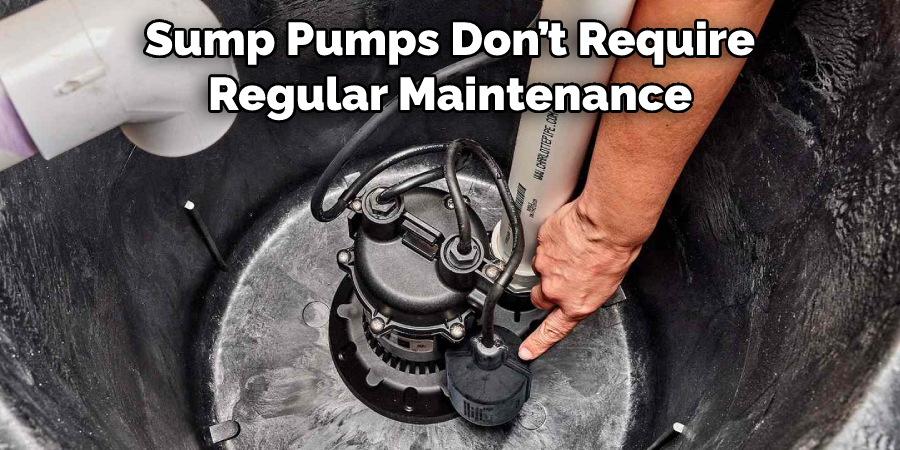
Although most sump pumps don’t require regular maintenance, any change in sound or performance could indicate a problem that needs to be addressed. Make sure to test it at least twice a year to ensure everything is running smoothly. However, if you are experiencing extreme weather conditions or a major storm, it’s best to check the sump pump more often.
5. Inspect The Float Switch:
The float switch is responsible for turning on and off the motor in your sump pump, so regular inspection is key. Look for any type of debris that may be blocking the switch and clear away anything that is. You should also check the cord connecting the switch to make sure it is secure and not frayed or damaged in any way.
You might also want to check the switch itself for any signs of corrosion or other damage. Make sure that it can freely move up and down so that it can turn the pump on and off properly. If there are any problems with the float switch, it should be replaced right away.
6. Check The Outlet Pipe:
The outlet pipe on your sump pump allows water to flow out of the house and away from your home’s foundation. Make sure that this pipe is free of any blockages and is connected securely to the main drain line outside of your home. If there are any cracks in the pipe, have them fixed as soon as possible. While it’s important to make sure that the outlet pipe is clear, it’s equally important to ensure that all of the connections are tight and secure. If the connections are loose, water could flow back into the basement and cause flooding.
7. Consider A Backup System:
Installing a backup system for your sump pump can help ensure that you don’t experience flooding during a power outage or if something were to happen to the main sump pump. A backup system can be powered by a generator or battery and will kick in if the primary pump fails for any reason.
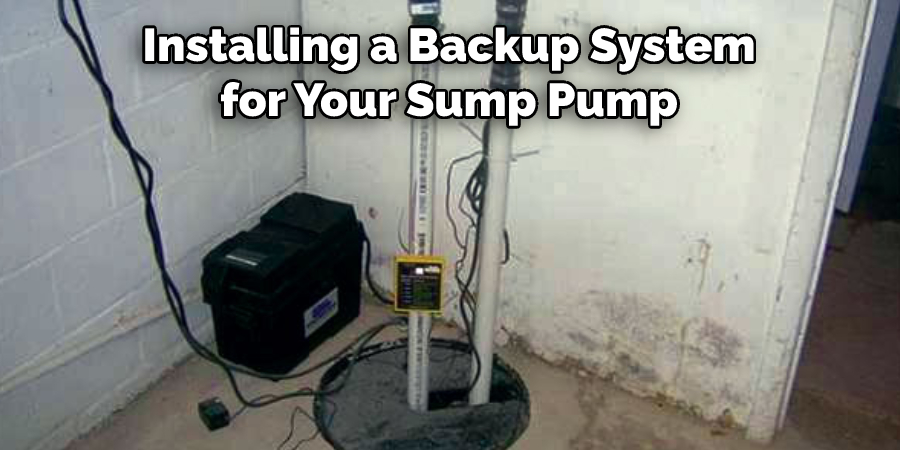
You can also consider getting an alarm that will notify you if the primary pump fails so you can take action quickly. With a backup sump pump in place, you can rest assured that your basement will remain dry and safe no matter what.
8. Upgrade Your Sump Pump:
If your current sump pump is more than ten years old, it might be time to upgrade it. Newer models are much more efficient and reliable and will help you save money on energy costs as well as provide added peace of mind that your home won’t experience flooding during heavy rains or other extreme weather conditions.
However, you do need to make sure the pump you purchase is large enough to meet your home’s needs and that it meets local building codes. Make sure to consult with a professional to get the right model for your home.
9. Hire Professional Maintenance:
Having a professional come out to inspect and maintain your sump pump annually is always a good idea. They can ensure that everything is working correctly and make any necessary repairs or replacements to keep your pump running properly. Although it may be an added expense, it could save you money in the long run by avoiding costly repairs and replacements.
Also, having a professional come out to inspect your pump can give you peace of mind knowing that it is in good working order. Regular maintenance will also help extend the life of your pump and minimize the possibility of any malfunctions. So, make sure to always hire a professional for your sump pump maintenance needs.
Keeping up with regular maintenance on your sump pump is essential for keeping it working well and preventing flooding in your home. By following these tips, you can help ensure that your sump pump is always functioning the way it should be.
You may have heard stories of homes suffering from basement flooding due to a faulty sump pump. To avoid this kind of disaster, you need to make sure that you take proper care of your sump pump and perform regular maintenance on it.
Things to Consider When Getting rid of Baf Smell from Sump Pump
1. Clean the Sump Pump Regularly:
The sump pump should be cleaned out regularly to avoid the build-up of debris and organic matter. This will help keep your pump running efficiently and reduce the chances of a bad smell coming from the sump pit.
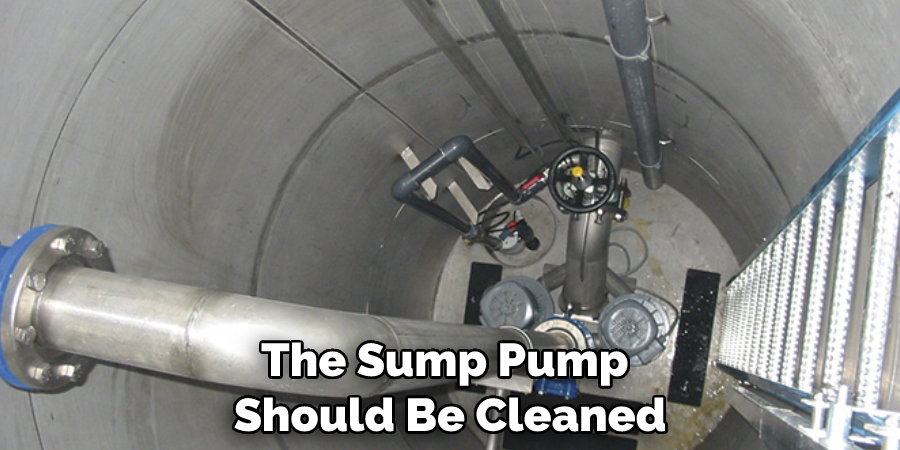
2. Ensure Proper Ventilation:
Ensuring proper ventilation in the area around your sump pump can also help to prevent any buildup of unpleasant odors. If possible, try to keep windows open or run a fan to ensure that air is circulating in the basement.
3. Install an Odor Neutralizing Filter:
Installing an odor-neutralizing filter on your sump pump can also be effective in reducing any bad smells coming from it. These filters are designed to absorb any foul odors before they escape into the surrounding area, leaving you with a much more pleasant environment in your home.
Conclusion
Sump pumps are important devices that help to protect your home from flooding. However, they can also produce a bad smell. If you have a sump pump and you’re dealing with this issue, there are several things you can do to get rid of the bad smell. This includes regularly cleaning the sump pit, using deodorants or scented oils, and ensuring that the ventilation is adequate. With these tips on how to get rid of bad smell from sump pump, you should be able to eliminate the bad smell from your sump pump and keep your home smelling fresh and clean.

